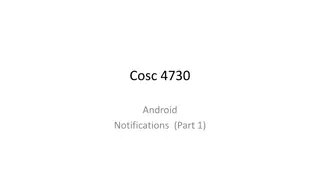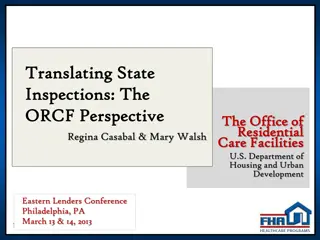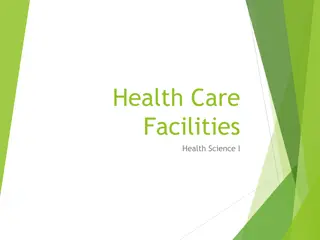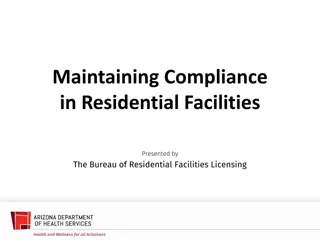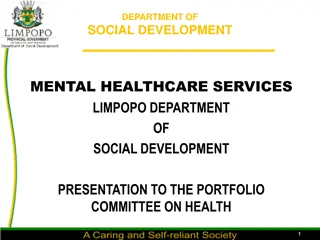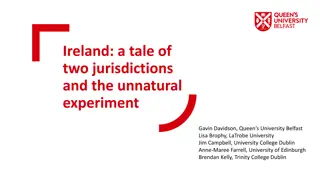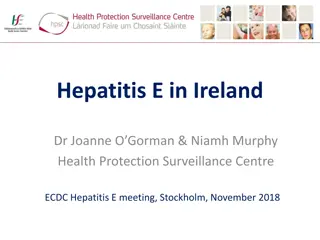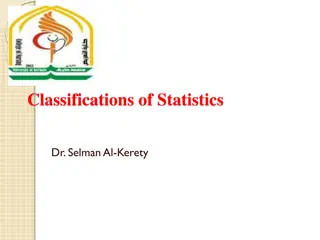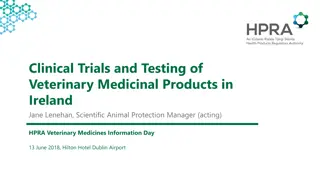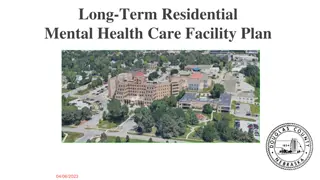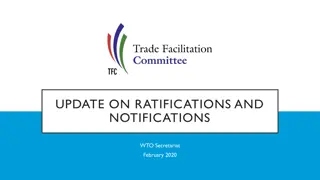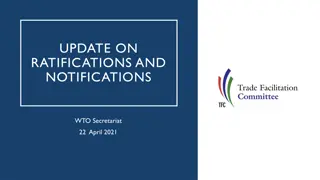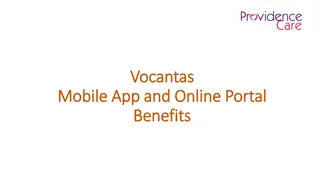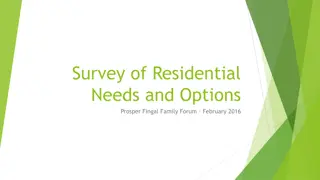Descriptive Analysis of Statutory Notifications from Residential Care Facilities in Ireland
This study conducted by Stephanie O'Regan, a Research Assistant at HIQA, presents a descriptive analysis of statutory notifications from residential care facilities for older persons and people with disabilities in Ireland. The research explores the types of adverse events reported, trends in notifications, and average risk ratings. Utilizing the Database of Statutory Notifications from Social Care (2013-2019), the analysis covers the total number of notifications, trends in notifications, and the proportion of different notification types contributing to the total. Insights are provided on the reporting requirements, including 3-day and Quarterly notifications, shedding light on critical areas like unexpected deaths, disease outbreaks, serious injuries, and allegations of abuse and staff misconduct. By examining quarterly notifications, the study delves into events such as restraint, fire alarm activations, thefts, injuries, and deaths concerning both older persons and people with disabilities. Through meticulous analysis using R and Tableau, the study sheds light on crucial aspects of statutory notifications in care facilities over the specified period.
Download Presentation

Please find below an Image/Link to download the presentation.
The content on the website is provided AS IS for your information and personal use only. It may not be sold, licensed, or shared on other websites without obtaining consent from the author. Download presentation by click this link. If you encounter any issues during the download, it is possible that the publisher has removed the file from their server.
E N D
Presentation Transcript
Descriptive analyses of statutory notifications from residential care facilities for older persons and people with disabilities in Ireland. Stephanie O Regan, PhD, Research Assistant, HIQA. February 2021.
Background: A review of statutory notifications found that different jurisdictions report different adverse events at different times. Northern Ireland and Ireland: no. of notifications reported. New Zealand and Australia: no. of notifications reported. Death of a resident was the only adverse event reported across all jurisdictions. Events involving serious injury, unexplained absence and abuse were commonly reported. Knowledge of receipt of notifications and how they have changed over time is limited at national level.
Background: In Ireland, there are two categories of statutory notifications based on their reporting requirement: 3-day and Quarterly. 3-day notifications are received The different types of 3-day notifications: 1. Unexpected death 2. Disease outbreak 3. Serious injury 4. Unexplained absence 5. Allegation of abuse 6. Allegation of staff misconduct 7. Staff under review 8. Unplanned evacuation individually by HIQA within 3-days of a single adverse event occurring.
Background: Quarterly notifications are received in composite by HIQA at the end of the annual quarter within the adverse event occurred. Prior to 2018, Quarterly notifications were reported as a composite notification regardless of the adverse event. Older persons: 1. Restraint 2. Fire alarm activation 3. Theft or burglary 4. Any other death 5. Pressure sores People with disabilities: 1. Restraint 2. Fire alarm activation 3. Theft or burglary 4. Any other injury 5. Any other death
Objective: Using the Database of Statutory Notifications from Social Care (2013-2019), describe: The number of statutory notifications in the dataset. The trends in statutory notifications from residential care facilities for older persons and people with disabilities. The average risk rating of statutory notifications from residential care facilities for older persons and people with disabilities.
Methods: The Database of Statutory Notifications from Social Care (2013-2019) was used for analysis. Analyses were performed using R and designed in tableau. There were 125,725 notifications in the database. 25,544 notifications without a listed bed number were removed from analyses. 2022 notifications without an assigned risk rating were also removed from analyses. The following analyses were expressed by service type (older persons and disabilities): The total number of notifications. The number of notifications adjusted per 100 registered bed numbers. The proportion of individual notification types contributing to total notifications. The trends in the contribution of individual notification types to total notifications.
Methods: The risk rating of notification types (mean) were calculated and expressed by service type. NOTE: The risk rating is expressed as a number that refers to the overall risk of the event/incident to residents. The risk rating is derived from multiplying the risk of impact of the event/incident on the residents (1 to 5) by the likelihood of the incident reoccuring (1 to 5). The risk rating can range from 1 to 20.
Results: Total number of notifications received 2013-2019: 98,159 Older persons: 48,209 Disabilities: 49,950 Disabilities: 49,950 51% Older Persons: 48,209 49%
Results: Partial data for 2013 Pressure ulcers were reported as a serious injury notification from 2013 to 2015 but moved to quarterly notifications from mid-2015 onwards.
Results: The volume of notifications received was recalculate excluding all notifications relating to pressure ulcers.
Results: Notifications per 100 beds Year No. centres Total notifications (n) Registered beds (n) 2013 264 1738 13461 12.9* 2014 314 4245 15997 26.5 2015 554 7651 29082 26.3** 2016 588 6421 30708 20.9 2017 596 7053 31177 22.6 2018 583 9284 31074 29.9 2019 582 11817 31213 37.9
Results: Unexpected death Disease outbreak Serious injury Unexplained absence Allegation of abuse Allegation of staff misconduct Staff under review Unplanned evacuation
Results: All composite quarterly notifications Restraint Fire alarm activation Theft Any other death Pressure sores
Results: Total number of notifications received 2013-2019: 98,159 Older persons: 48,209 Disabilities: 49,950 Older Persons: 48,209 49% Disabilities: 49,950 51%
Results: Year No. centres Total notifications (n) Registered beds (n) Notifications per 100 beds 2013 NA N/A* N/A N/A 2014 43 199 451 44.1 2015 347 2461 3108 79.2 2016 674 5142 5201 98.9 2017 912 9661 6959 138.8 2018 1171 14596 9106 160.3 2019 1237 17891 9004 198.7
Results: Unexpected death Disease outbreak Serious injury Unexplained absence Allegation of abuse Allegation of staff misconduct Staff under review Unplanned evacuation
Results: All composite quarterly notifications Restraint Fire alarm activation Theft or burglary Any unserious injury Any other death
Main Findings: The no. notifications received increased from 2013 to 2019, independently of the increase in registered beds and service type. Increases may be due to more comprehensive reporting or the occurrence of more adverse events. Notifications of serious injury, unexpected death and allegations of abuse were the most frequent types received. The mean risk rating across all notification types was low at 2 to 5.5.
Strengths & Limitations: Strengths: Number of years statutory notification data is available for National comprehensive database Limitations: Notification data from 2013 is limited. Challenge of examining over time limited due to external factors. Registered beds rather than occupied beds. Received rather than submitted.
With thanks Niall McGrane, Paul Dunbar, Mary Dunnion, Ian Leistikow, Laura M O Connor. Funded by the HRB SDAP award. SDAP-2019-005. PI: Dr Laura O Connor Co-funded and hosted by the Health Information and Quality Authority. Project Sponsor: Phelim Quinn


